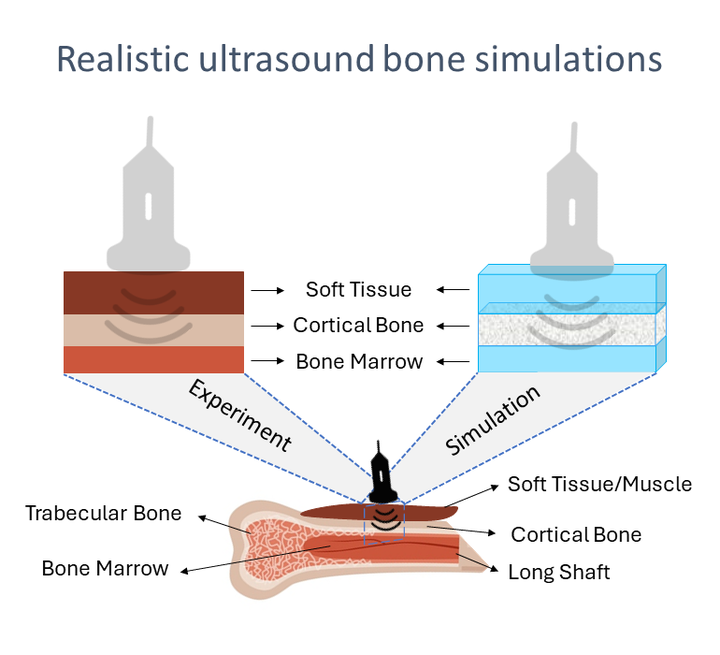Over 3 million people in the UK are estimated to have osteoporosis, which is commonly diagnosed by patients’ medical history and measuring bone mineral density (BMD) using X-Ray radiation. BMD is also a crucial parameter for the NHS Fracture Risk Assessment Tool to estimate a 10-year probability of major fracture risk in the spine, shoulder, forearm or hip, which is especially important for the aging UK population. Ultrasound sensing can offer a bone monitoring method that is safe, practical and quantitative, so that it can be used for prognosis and during the personalized treatment process as frequently as necessary.
Aim: Develop a new method on “Bone characterization with acoustic and ultrasound waves” for measuring BMD. Commercial ultrasound scanners are designed for soft-tissue imaging and their performance is poor for hard-tissue imaging due to its different biomechanics. The opportunity here is that bone tissue allows the propagation of surface waves for longer distances unlike soft-tissue. Instead of designing an expensive imaging system, by strategically placing ultrasound sensors at certain locations valuable information can be acquired by several transducers. Especially for patients with metal implants and hip replacements ultrasound imaging is the best modality since CT and MRI are prone to artefacts.
